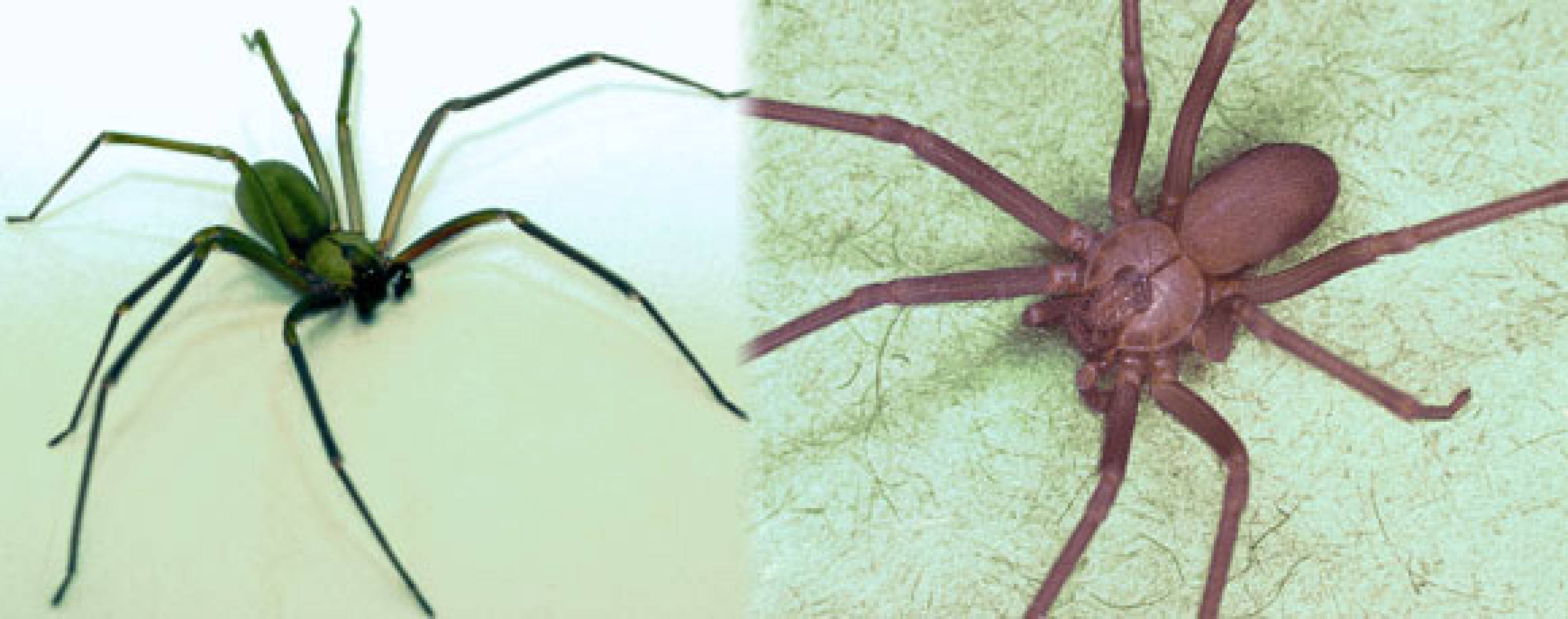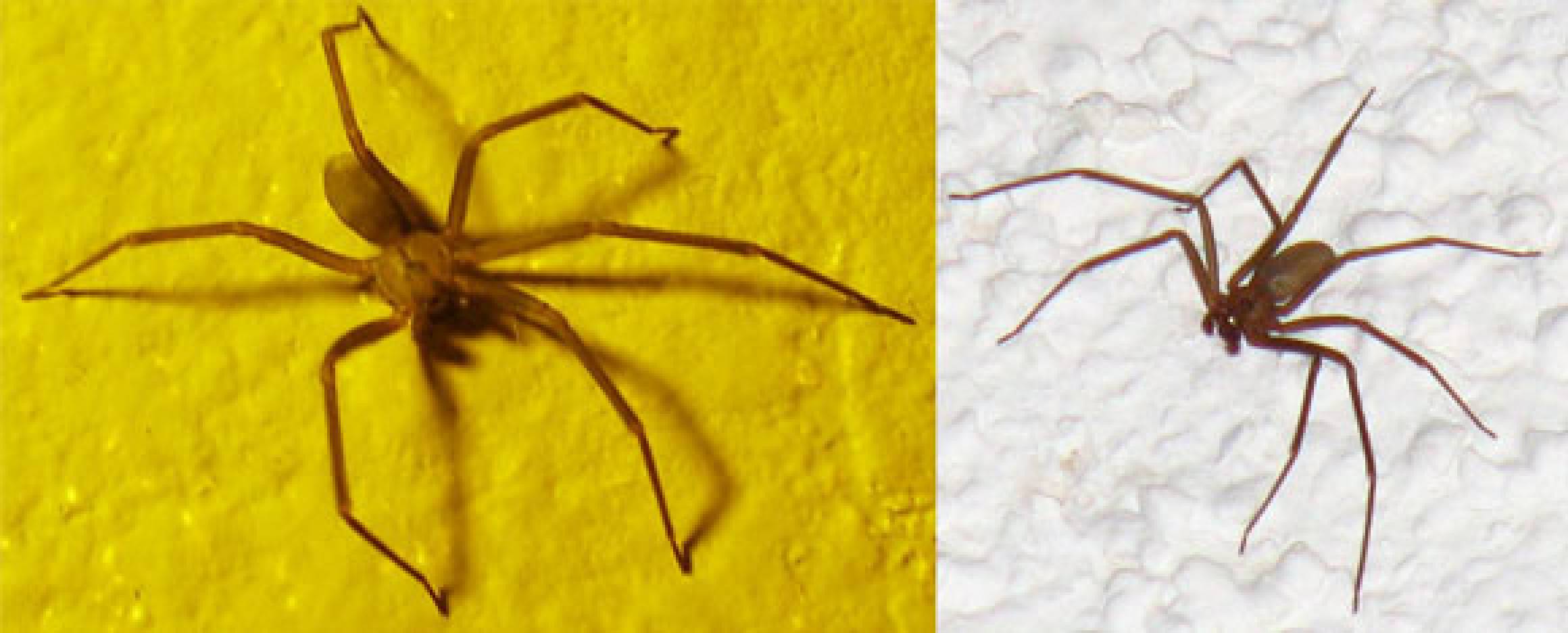What You May Not See In Brown Recluse Pictures. 8 Notables
The 'brown recluse spider', 'brown recluse', 'violin spider' and 'fiddleback spider' are different names for the same spider, which is world-known due to its venomous bite.

This species of spiders is about 6-20 mm or even larger in size, and ranges in color from cream-colored to dark brown and blackish gray. But the arachnid cephalothorax has a marking of a violin-like black line by all means. For this reason, a 'brown fiddler' has got its specific nickname.

8 Things You May Not See in Brown Recluse Pictures
1. Description: Unlike most spiders, the brown recluse spider has 3 pairs of eyes arranged in a particular way. This is the definitive identification, alternatively to the violin marking. The latter is not diagnostic, as far as pirate spiders and cellar spiders can have similar patterns.
2. Life Cycle: Adult species often live for 1-2 years. Each female produces a few 50-egg sacs from May to July. The eggs hatch in 1 month, but a little spider takes 1 year to become an adult.
3. Resiliency: The brown recluse spiders can tolerate up to 6 months of food absence and extreme drought. There were even cases when they could survive for over 5 seasons in unbearable conditions!
4. Behavior: Typically with radially extended legs, the brown recluse pictures may show an alarmed creature with lowered body and withdrawn forward legs. Being threatened, it simply flees and avoids a conflict. When traveling, it periodically stops and renews the internal hydraulic blood pressure, in order to get enough strength in its legs!
5. Habitat: Asymmetrical or irregular webs are frequently built in dry and undisturbed places. Opposed to most web weavers, brown recluse spiders leave them to hunt soft-bodied insects at night.
6. Bite: The brown recluse spider rarely becomes aggressive. So, its bites are rather uncommon. Still this happens when these spiders are pressed against their skin; in other words, if they are tangled within fabric. However, their fangs are too tiny to penetrate most fabrics. If the bite has occurred, it is never felt initially, though it is serious. One should know that a small amount of the brown recluse's hemotoxic venom may be potentially deadly (mostly, in children under 7 or those with weak immune systems). Besides, such bites can result (though rarely) in thrombocytopenia, hemolysis, organ damage, disseminated intravascular coagulation, soft tissue destruction. Misdiagnosis of this spider bite is common in nearly 30% of patients. In medical literature, numerous other spiders are also associated with necrotic bites.
7. Bite treatment: The 1st aid involves ice application and prompt medical care. As for routine treatment, it should include local wound care plus tetanus prophylaxis. Occasionally, an antibiotic will be prescribed as well to cure the wound infection, which is quite rare.
8. Survival: Because of the increased fear of brown recluse spiders in public, their extermination is frequently performed.
Ξ Related Post from "Brown Recluse Pictures"


